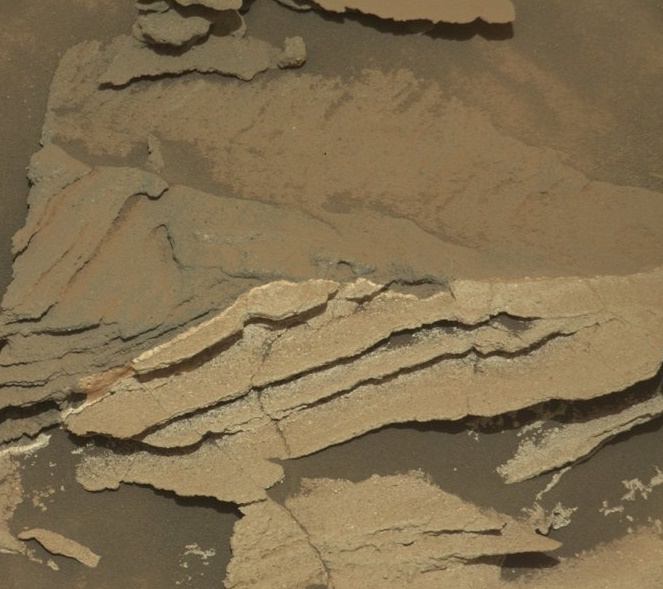NASA’s Curiosity Rover has uncovered some rocks on the Red planet which have surprisingly high concentration of silica. This presence of silica has created a new mystery and has made astronomers to rethink about the chemical composition in Mars. The recent high definition images captured by the Mars Curiosity Rover are showing rocks with sufficiently good amount of silica. Now why is this such a big news? Why is it going trending in every social medium? Just only because it’s something about Mars and NASA? Certainly not! The rocks whose images have been published, are composed of nine tenth portion of silica and chemically, silica is responsible for the formation of rocks by combining the elements silicon and oxygen, commonly seen on Earth as quartz.
Speaking from perspective of Chemistry, if water at a place is acidic then it will carry off all minerals and substances but silica. Again, if water is basic, then it will dissolve the silica which will be deposited to form the rocks. So the big catch is water! Scientists are trying to figure out the connection of water with the silica in rocks. Curiosity Rover is drilling different surfaces on Mars since forty months and studying different geological layers on Mars. Since the launch of Cusiority Rover on Mars, it has found out that billions of years ago there were lakes which and other environmental conditions that could sustain life. Then Curiosity reached the younger layers of Mount Sharp’s slopes, and found out that historical environmental conditions evolved from lakes, rivers and deltas to the harsh aridity of today’s Mars.
“These high-silica compositions are a puzzle. You can boost the concentration of silica either by leaching away other ingredients while leaving the silica behind, or by bringing in silica from somewhere else,” said Albert Yen. Yen is a member of Mars Rover team at NASA’s Jet Propulsion Laboratory, Pasadena, California. “Either of those processes involve water. If we can determine which happened, we’ll learn more about other conditions in those ancient wet environments.”
“The high silica was a surprise — so interesting that we backtracked to investigate it with more of Curiosity’s instruments,” said Jens Frydenvang of Los Alamos National Laboratory in New Mexico and the University of Copenhagen, Denmark. The study on the environment and geology of Mars are still continuing. More and more puzzles will appear and more and more puzzles will be solved by NASA Curiosity Rover team.

Leave a Reply